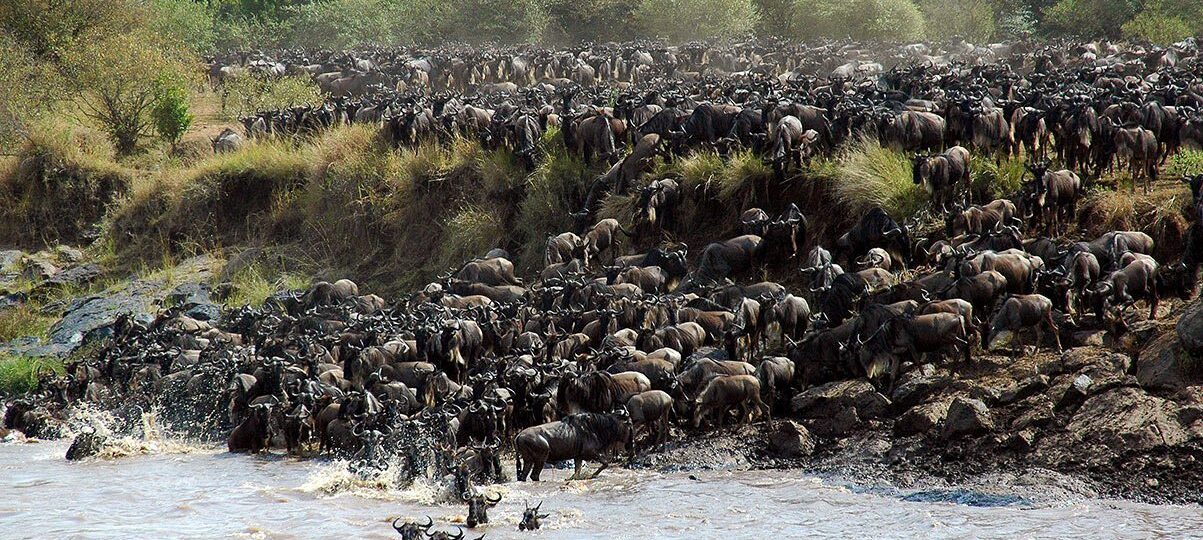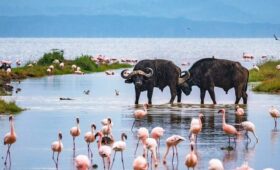The Great Migration in Kenya’s Masai Mara is a spectacle unlike any other – a raw, untamed display of nature’s power as millions of wildebeest and zebra traverse the plains in their relentless search for greener pastures. To witness this incredible event is a bucket-list experience for many safari enthusiasts. This guide will equip you with the essential information to plan your adventure, and remember, for a seamless and unforgettable journey, SIMBA PRINT SAFARIS is your expert partner in navigating the logistics and ensuring you’re in the heart of the action.
Where to Watch the Thrilling River Crossings in Masai Mara.
The dramatic river crossings, where massive herds brave the Mara River’s strong currents and lurking predators, are often the highlight of a migration safari. While the exact timing and location are dictated by nature, certain areas are historically favored crossing points:
- The Mara River near the Serena Lodge: This area is a well-known crossing point and often sees significant activity.
- Confluence of the Mara and Talek Rivers: The meeting point of these two rivers can attract large numbers of migrating animals.
- Downstream towards the Serengeti Border: Keep an eye on the river sections further south as the herds move between the two ecosystems.
Your experienced guide from us will be crucial in tracking the movement of the herds and positioning you in the best locations for potential crossings. We understand animal behavior and have intimate knowledge of the Mara’s terrain. Remember, patience is key – you might witness a crossing immediately or wait for hours, but the reward is often breathtaking.
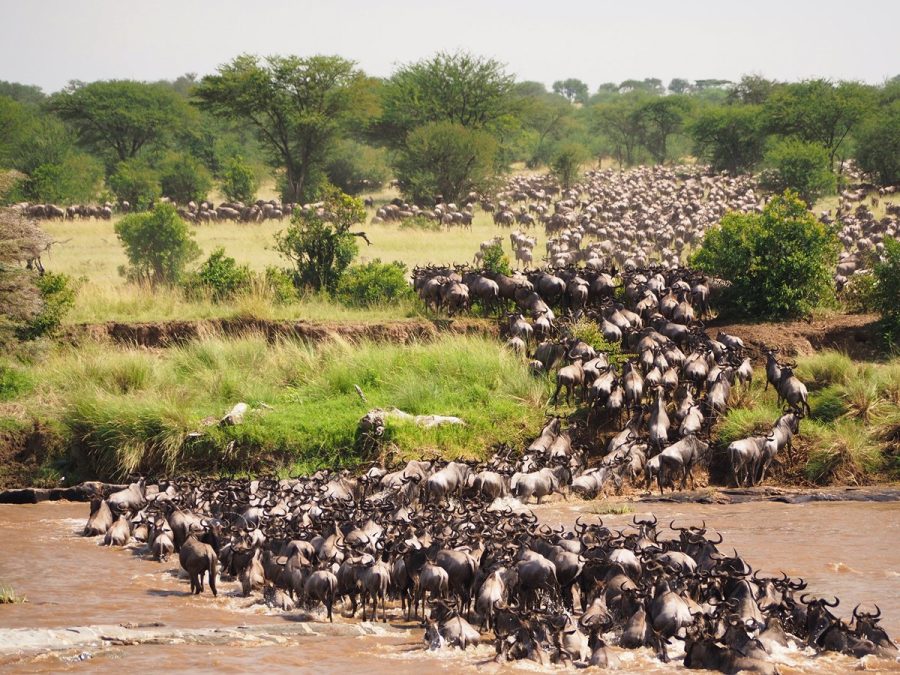
Choosing Between the Reserve and the Exclusive Conservancies.

When planning your migration safari, you’ll have the choice between staying within the main Masai Mara National Reserve or opting for one of the surrounding private conservancies. Each offers a distinct experience:
- Masai Mara National Reserve:
- Pros: Generally offers a wider range of accommodation options to suit various budgets and provides access to iconic Mara landmarks. The road network is more extensive, facilitating game drives.
- Cons: Can become quite crowded, especially during peak migration season, with a higher concentration of vehicles around wildlife sightings.
- Private Conservancies (e.g., Mara North, Olare Motorogi, Naboisho):
- Pros: Offer a more exclusive and intimate safari experience with fewer vehicles, often allowing for activities not permitted in the reserve, such as night drives, walking safaris, and off-road driving for closer wildlife encounters. Conservancy fees often directly benefit local Maasai communities and contribute to conservation efforts.
- Cons: Accommodation tends to be more expensive.
We can provide invaluable insights into the pros and cons of each option, helping you select the perfect base for your migration adventure based on your preferences and budget.
Add-on Experiences to Enhance Your Kenya Safari.
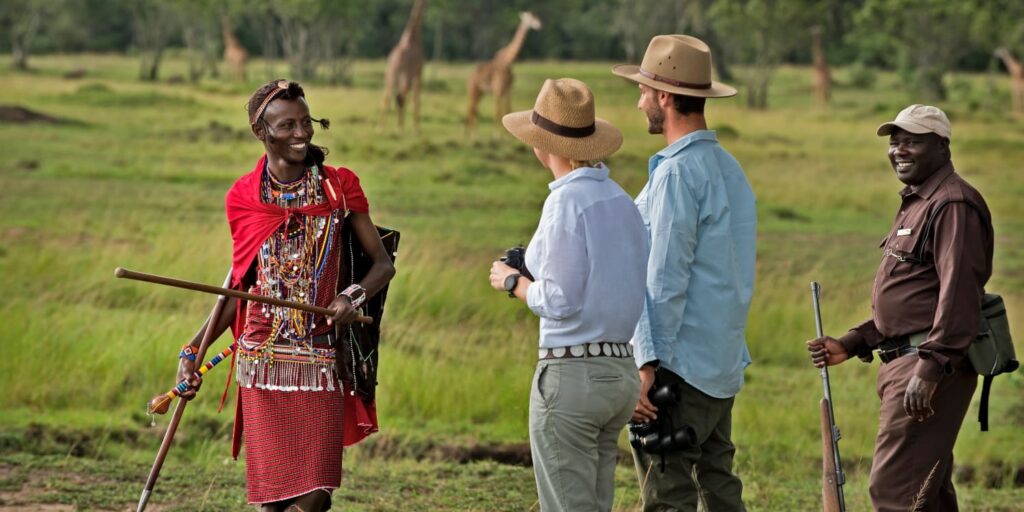
While witnessing the Great Migration is an extraordinary experience in itself, consider enriching your Kenya safari with these unforgettable add-ons, easily:
- Hot Air Balloon Safari: Soar above the plains at dawn for a breathtaking panoramic view of the Mara, potentially spotting the migrating herds spread out below.
- Maasai Cultural Visit: Immerse yourself in the rich traditions of the local Maasai people with a visit to a village, learning about their customs and way of life.
- Guided Walking Safaris: Experience the bush from a different perspective, focusing on the smaller details of the ecosystem, animal tracks, and the interconnectedness of nature (often available in conservancies).
- Explore Other Parks: Extend your Kenyan adventure with visits to Lake Nakuru National Park, famous for its flamingoes and rhinos, or Amboseli National Park, renowned for its stunning views of Mount Kilimanjaro and large elephant herds.
Let us tailor an itinerary that combines the thrill of the migration with these enriching culture and wildlife experiences.
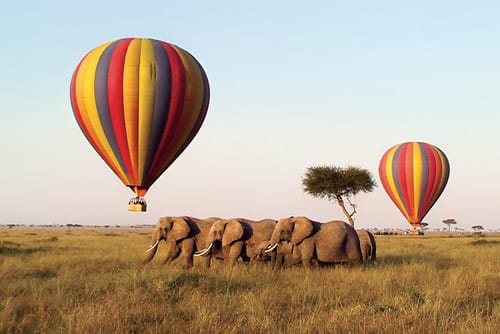
What to Expect and How to prepare for then Great migration.
- Embrace the Unpredictable: Wildlife operates on its own schedule. River crossings can be dramatic and frequent or involve long periods of anticipation. Be prepared for both scenarios and enjoy the overall safari experience.
- Long Game Drives: Expect to spend several hours in a safari vehicle as you search for the migrating herds and potential crossing points. We ensures comfortable vehicles and knowledgeable guides to make these drives enjoyable.
- Dust and Weather: The plains can be dusty, especially during the drier months. Pack accordingly with appropriate clothing and consider bringing a lens cloth for your camera. Weather can be variable, so layering your clothing is advisable.
- Respect Wildlife: Always maintain a safe distance from animals and strictly follow your guide’s instructions. Remember, you are a guest in their natural habitat.
- Essential Packing: Include comfortable, neutral-colored clothing, sturdy walking shoes, a wide-brimmed hat, sunglasses, sunscreen, insect repellent, binoculars, a good camera with sufficient memory, and any personal medications.
We will provide you with a comprehensive packing list and pre-trip briefing to ensure you are fully prepared for your adventure.
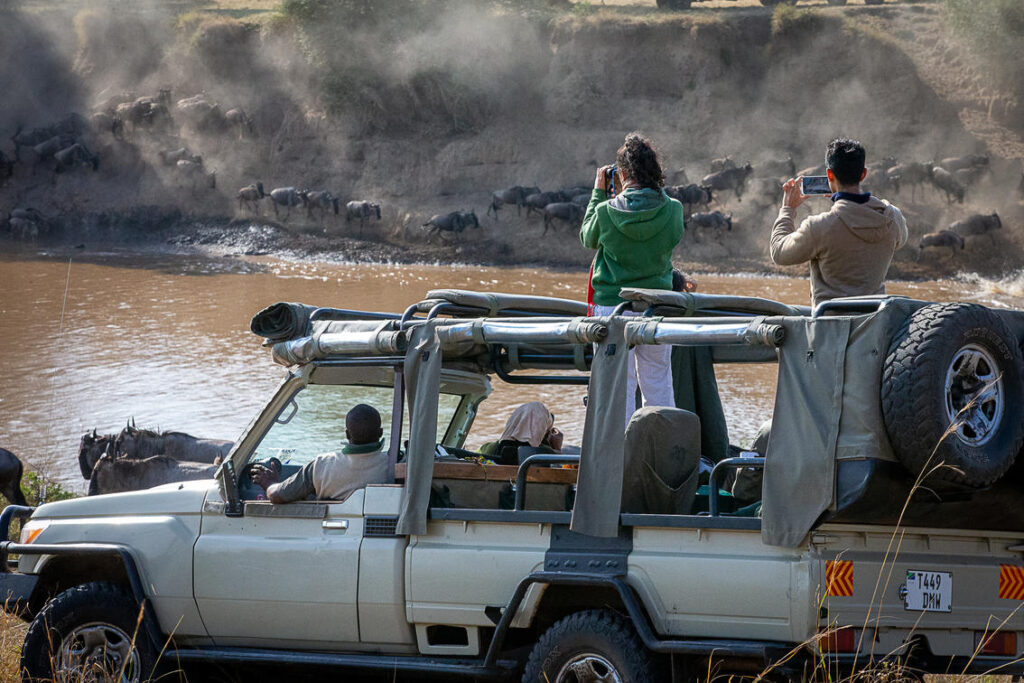
Where to Stay During the Migration Season.
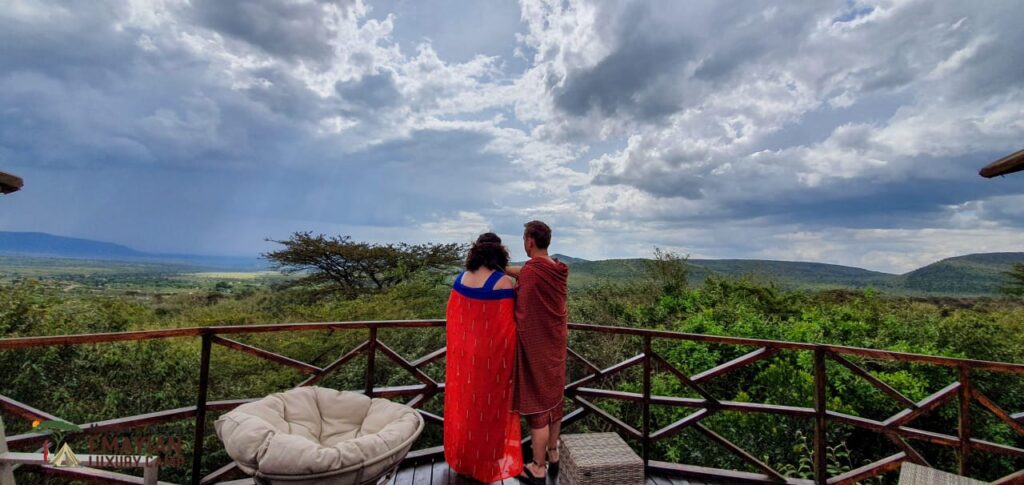
- Accommodation options in and around the Masai Mara cater to a wide spectrum of preferences and budgets:
- Luxury Lodges and Tented Camps: Offering premium amenities, exceptional service, and often located in prime wildlife viewing areas.
- Mid-Range Lodges and Tented Camps: Providing comfortable and well-equipped accommodation with an authentic safari feel.
- Budget-Friendly Options: Including campsites and more basic lodges for travelers seeking a more economical experience.
Given the popularity of the Great Migration, especially during peak season, it is crucial to book your accommodation well in advance. We have established strong relationships with a variety of reputable establishments and can secure the best options for your desired level of comfort and location.
When to visit the Masai Mara for the Migration.
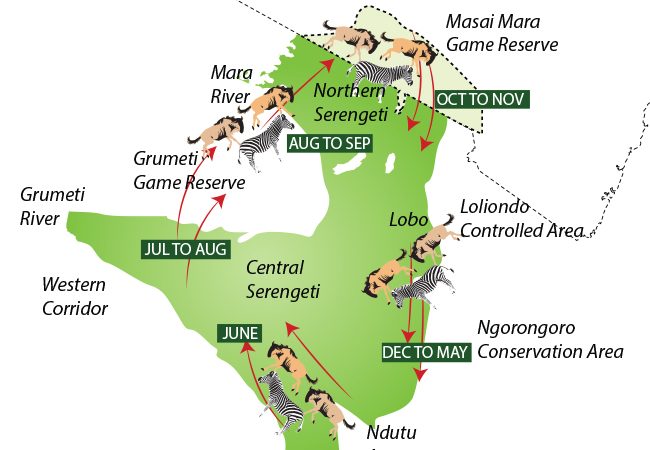
- The most iconic phase of the Great Migration in the Masai Mara, the river crossings, typically occurs between July and October. However, the movement of the herds is a continuous cycle:
- July to October: This is generally considered the peak season for witnessing the dramatic river crossings as the wildebeest and zebra migrate north from the Serengeti in search of fresh grazing.
- June: The first large herds may begin to arrive in the southern reaches of the Mara.
- November: As the short rains begin in the south, the herds start their journey back towards the Serengeti.
Keep in mind that these are general timelines, and the exact timing can vary depending on rainfall patterns. SIMBA PRINT SAFARIS stays informed about the movement of the herds and can advise you on the optimal time to visit for the best chances of witnessing the incredible river crossings.
Embarking on a Great Migration safari in the Masai Mara is a truly unforgettable experience. Let SIMBA PRINT SAFARIS take the reins in planning your logistics, securing the best accommodations, and providing expert guidance to ensure you witness this natural wonder in all its glory. Contact us today to begin crafting your dream Kenyan adventure!

